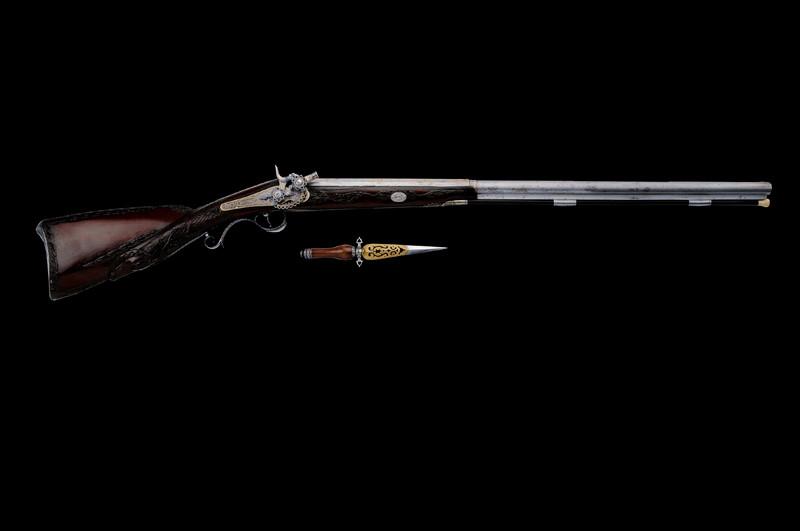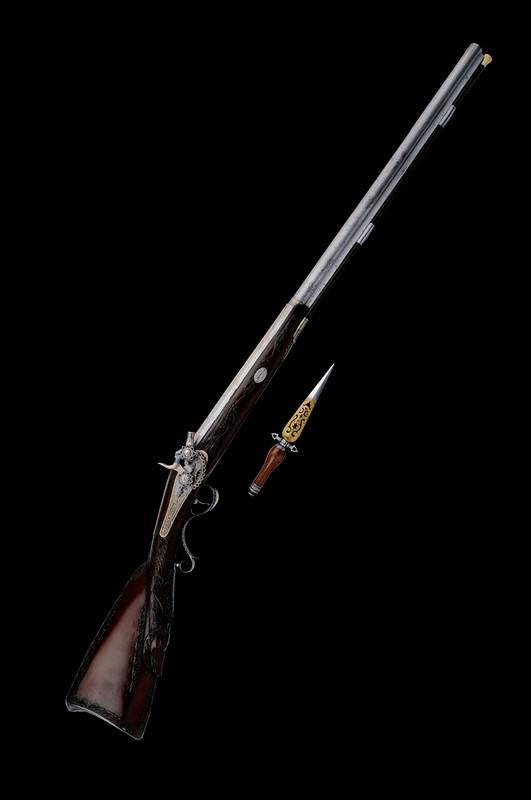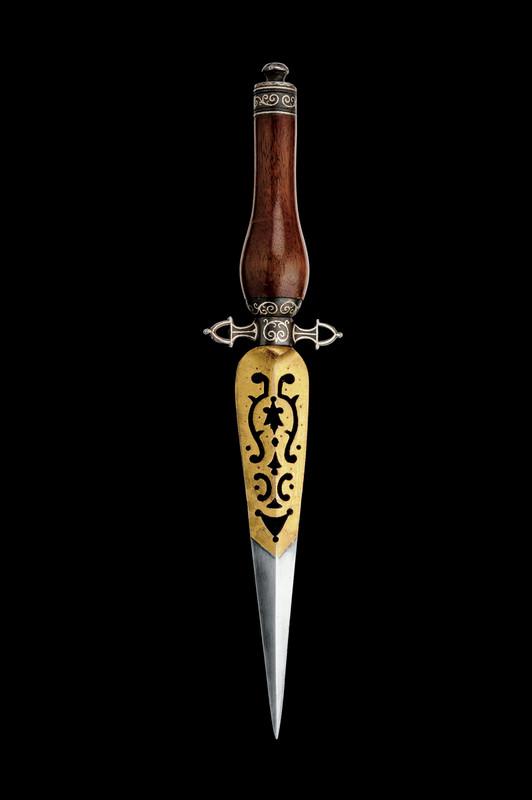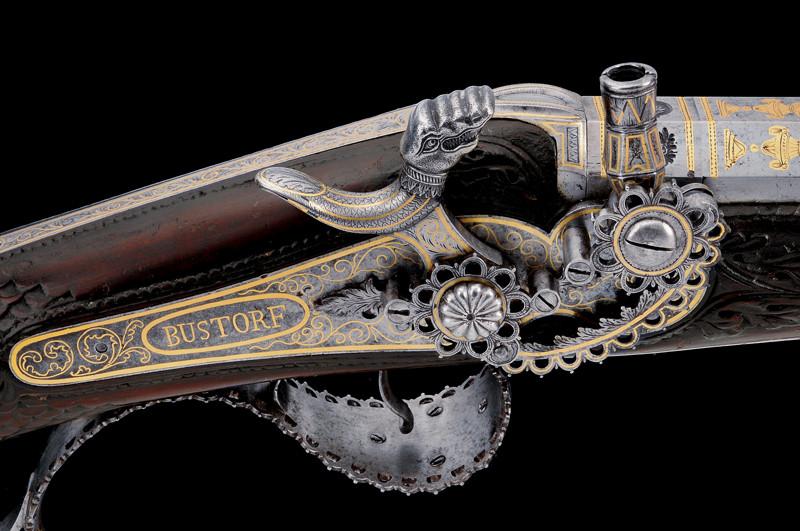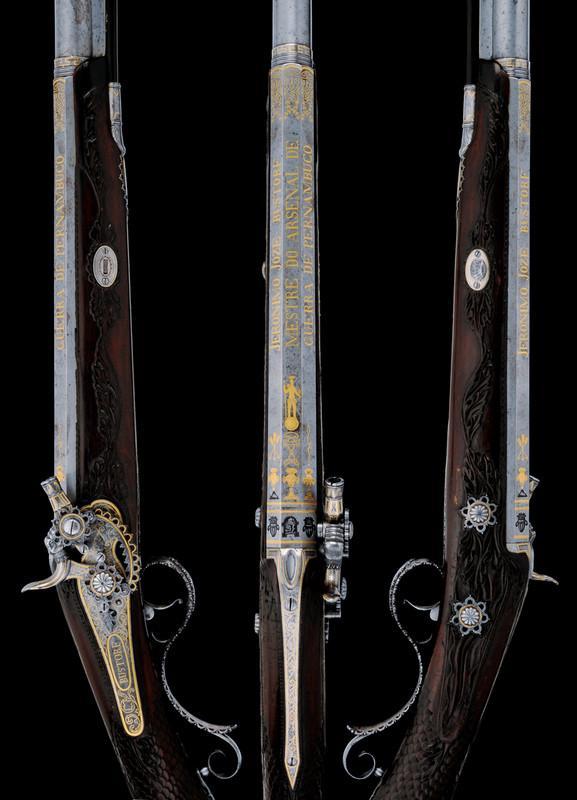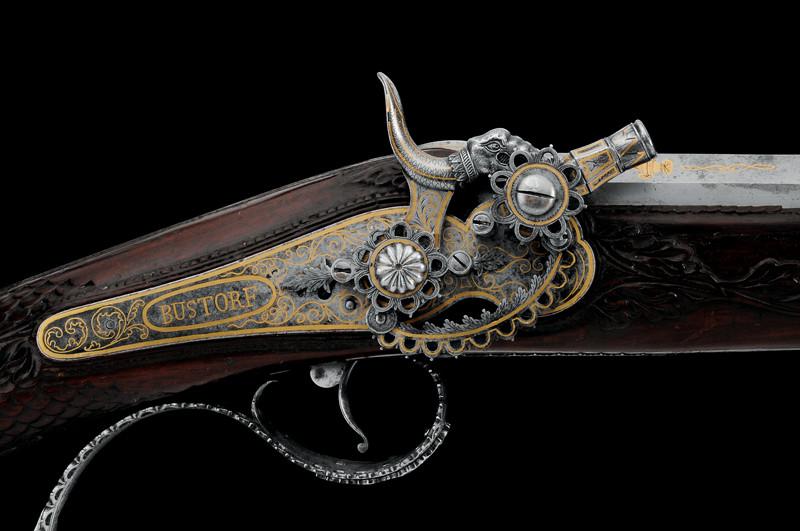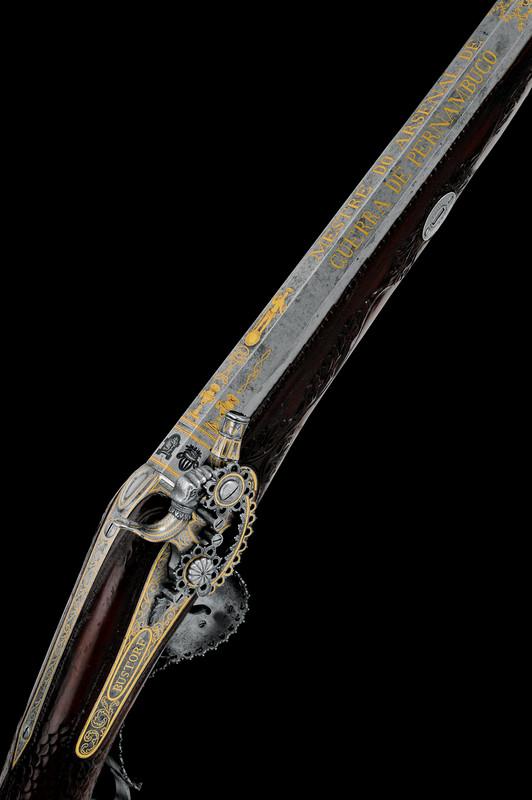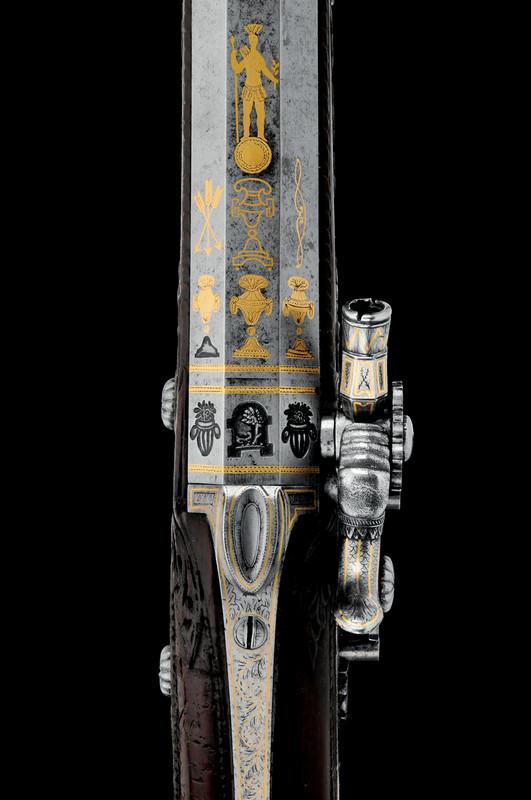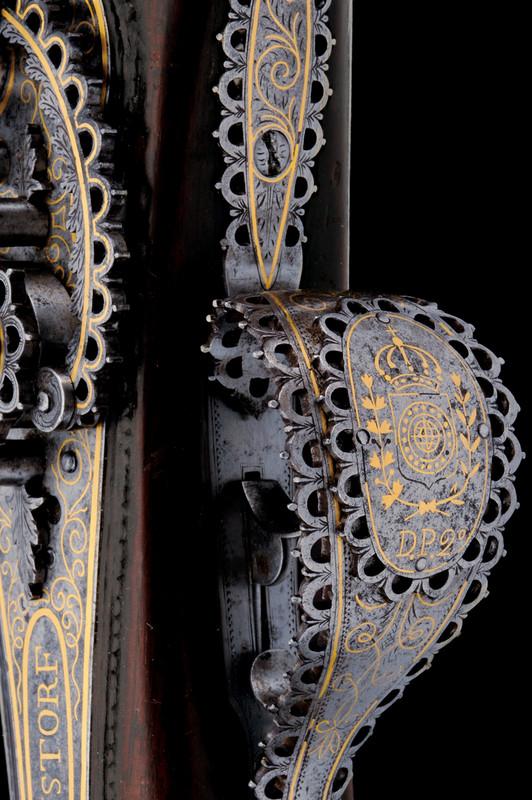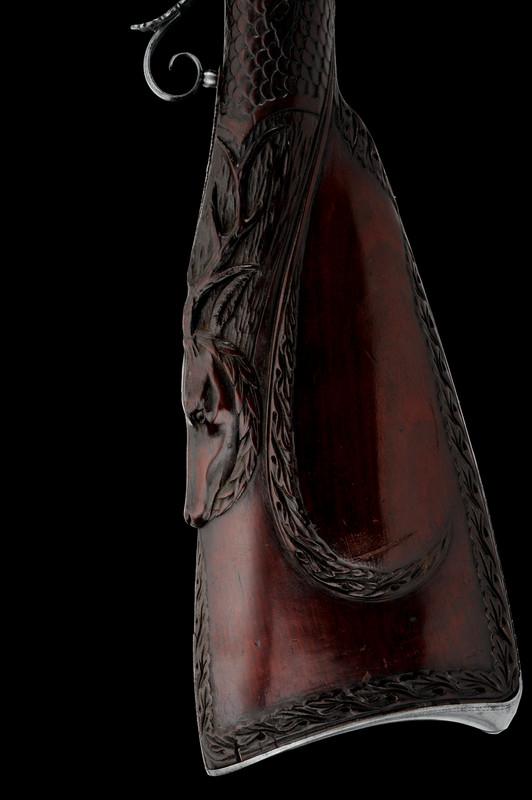
Jeronimo Joze Bustorf
second quarter of the 19th Century
Fine smoothbore two stage barrel with rings and golden Greek key at the girdle, the base with three deep marks followed by vases, arrows, a yoke and the effigy of a native brazilian on a shield; the central part of the octagonal portion has the golden inscription "JERONIMO JOZE BUSTORF / MESTRE DO ARSENAL DE / GUERRA DE PERNAMBUCO", at the end of the stages are golden filigree inlays, 18 mm cal.; long tang with rearsight decorated en suite; fine backward spring lock and flate plate marked "BUSTORF" among golden racemes; cock, fretwork in the shape of a dragon, with the Forsyth system connected by a richly fretwork bridge, engraved and gold inlaid (a very fine and unusual decoration repeated on almost all of the mounts); fine wooden half stock, richly sculpted with floral motifs with a deer's head in the lower part of the stock and scales at the neck; along the trigger guard, decorated en suite, with the golden crowned coat of arms of Peter II, marked "D.P.2" (Dom Pedro II); counterplate formed by two roses; guard with loading gate containing a plug bayonet, with fretwork and gilded blade, iron silver inlaid mounts with wooden grip; ivory-tipped ebony ramrod.
Peter II (Pedro de Alcântara João Carlos Leopoldo Salvador Bibiano Francisco Xavier de Paula Leocádio Miguel Gabriel Rafael Gonzaga de Bragança e Habsburgo, By the Grace of God and Unanimous Acclamation of the People, Constitutional Emperor and Perpetual Defender of Brazil), born in 1825 in Rio de Janeiro Imperial Palace, dies in exile in Paris in 1891; he was Emperor of Brasil at the age of six (in 1831) and remains in charge until he's almos sixty, until 1889. The gun could be a gift for his crowning, since it was manufactured around 1830. This system, called Forsyth's scent-bottle, takes its name from a Scottish monk that invented this type of injection that allows to use firearms even under the strong tropical rains.

